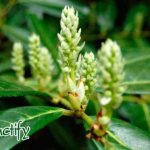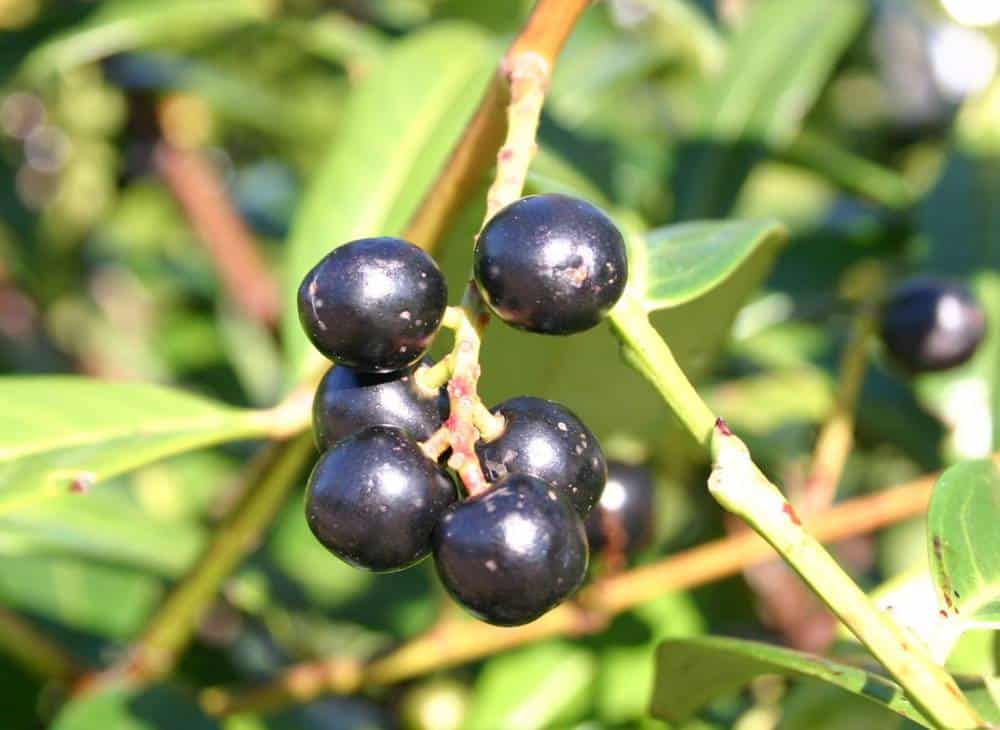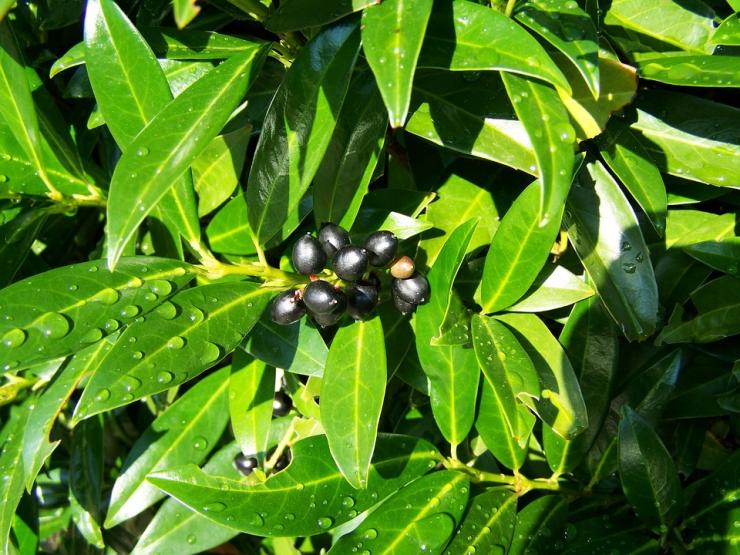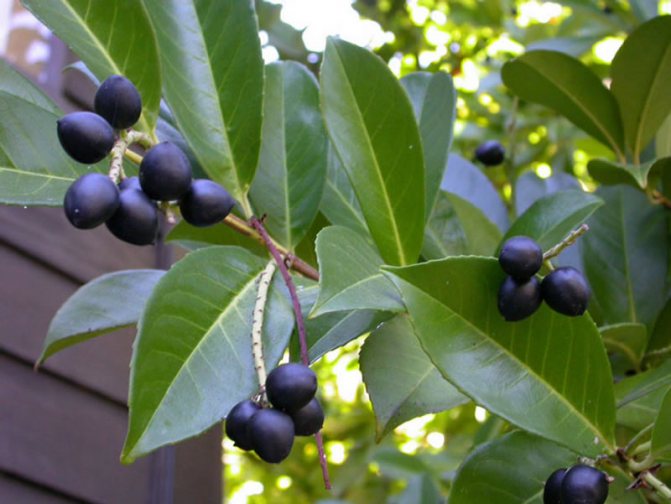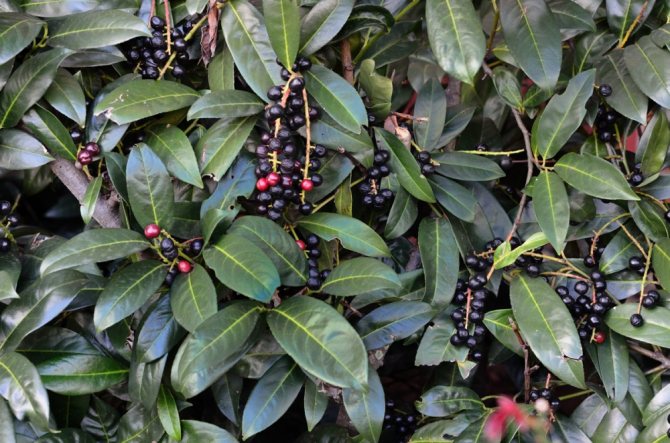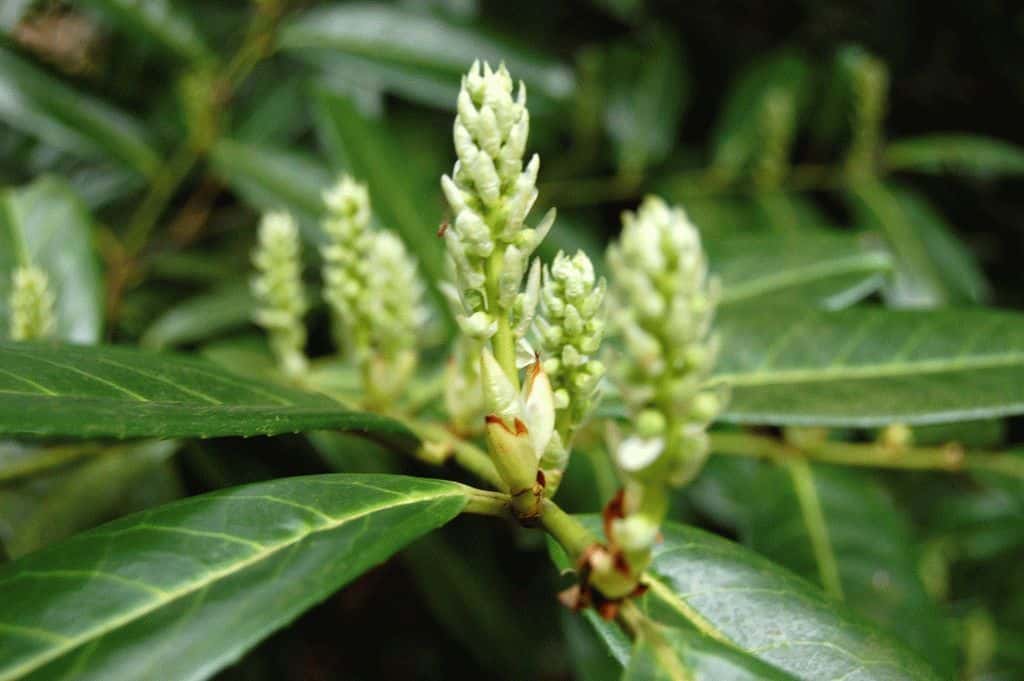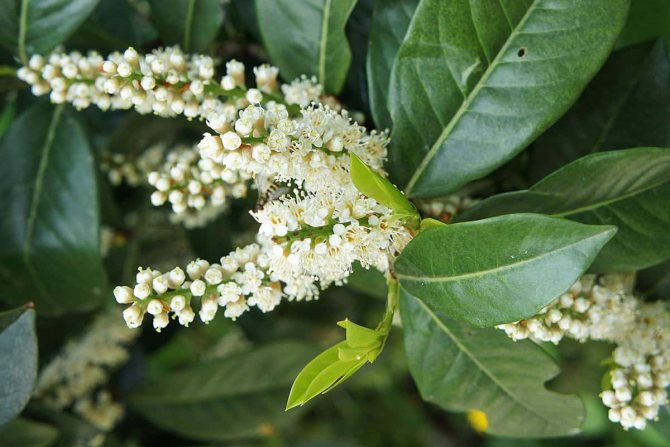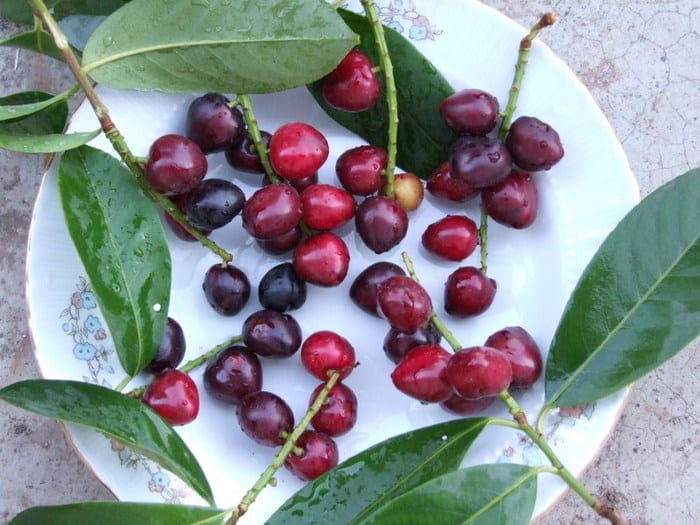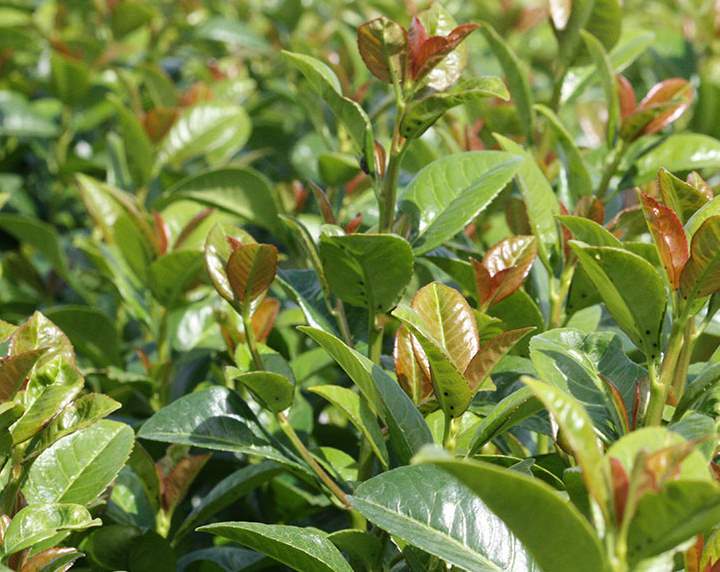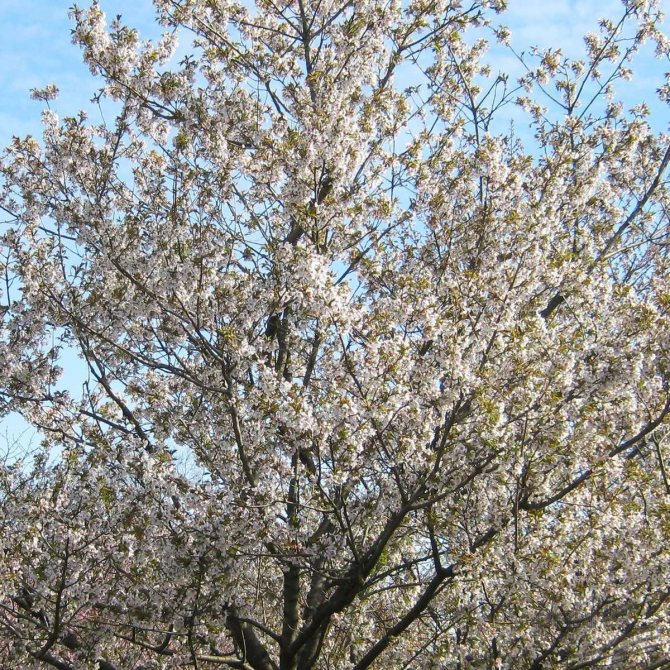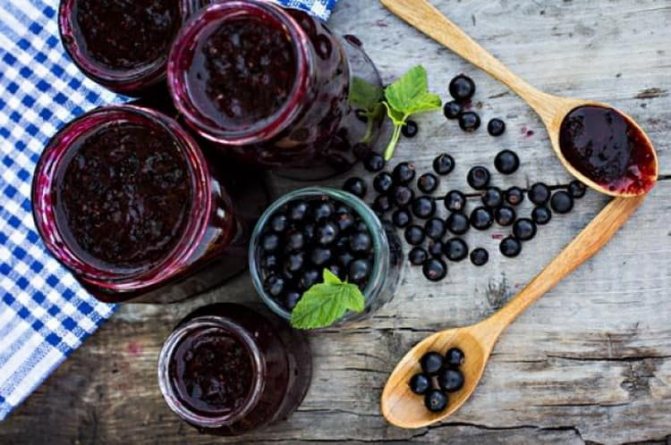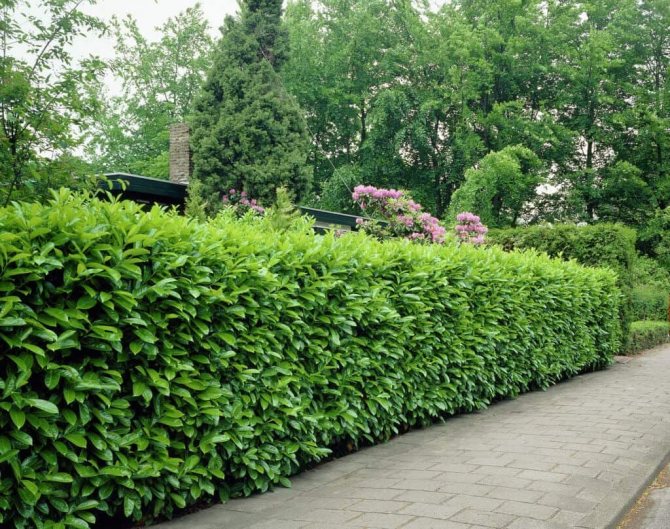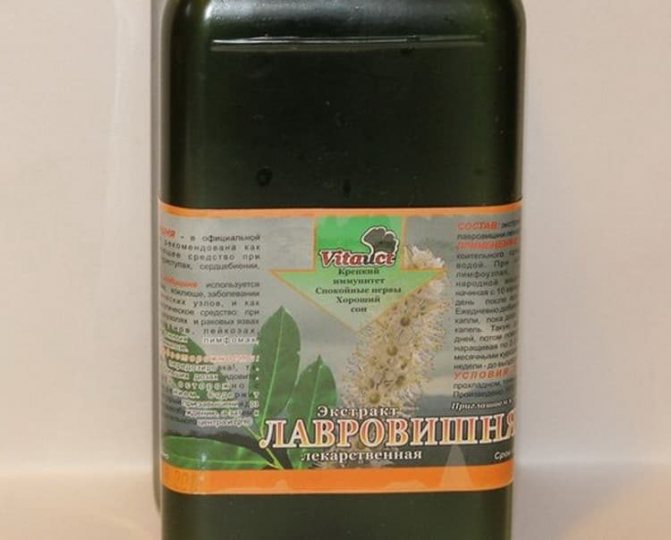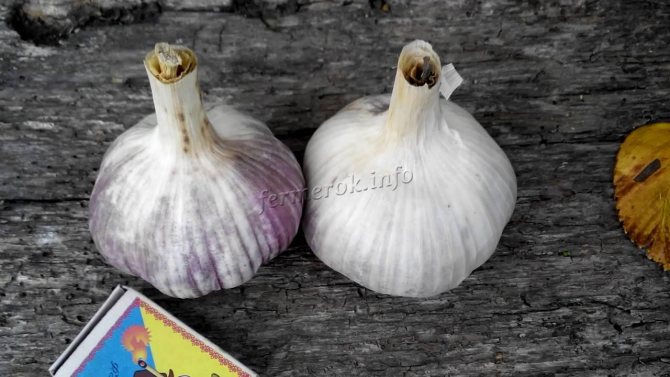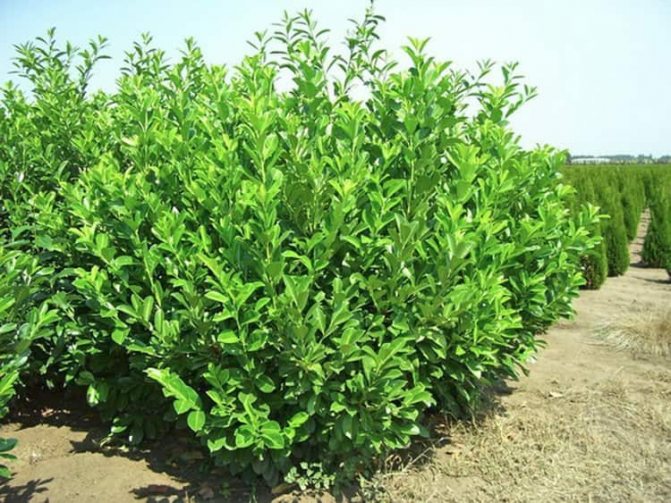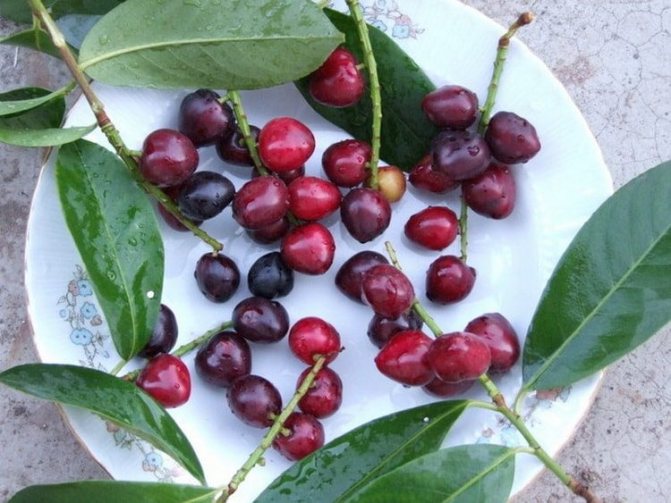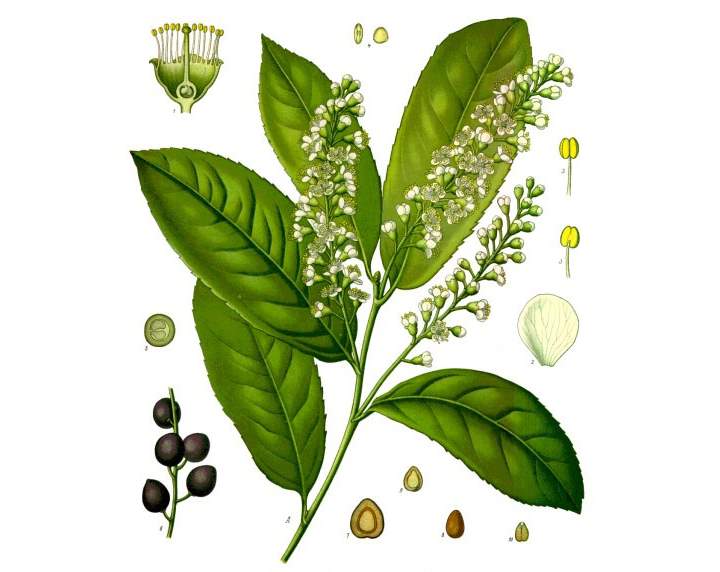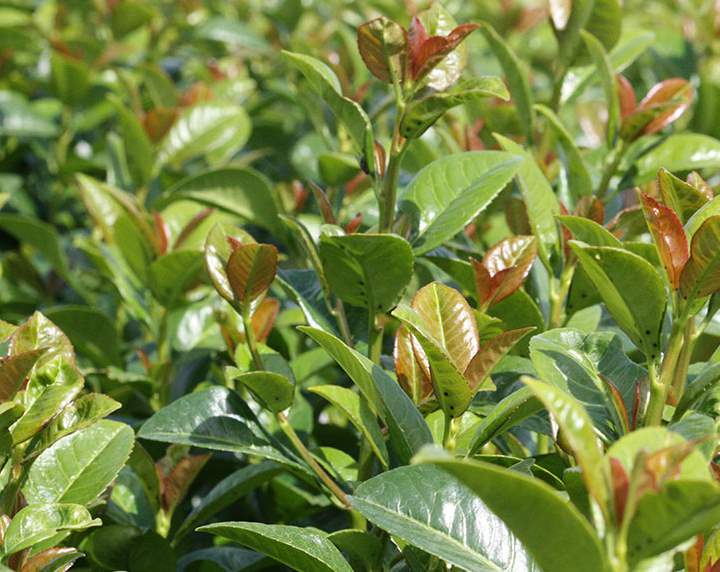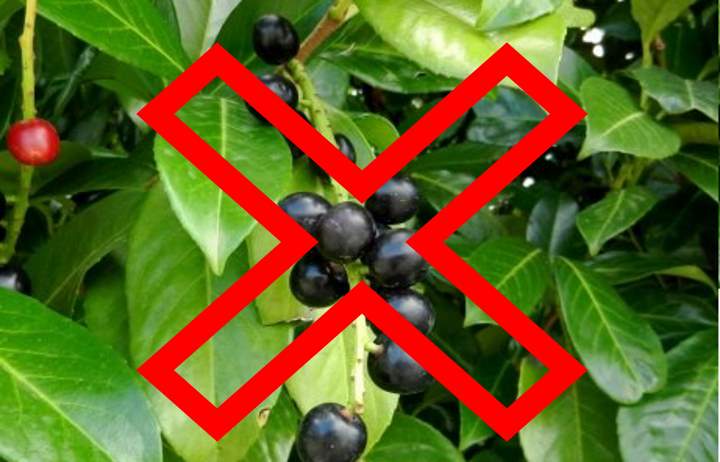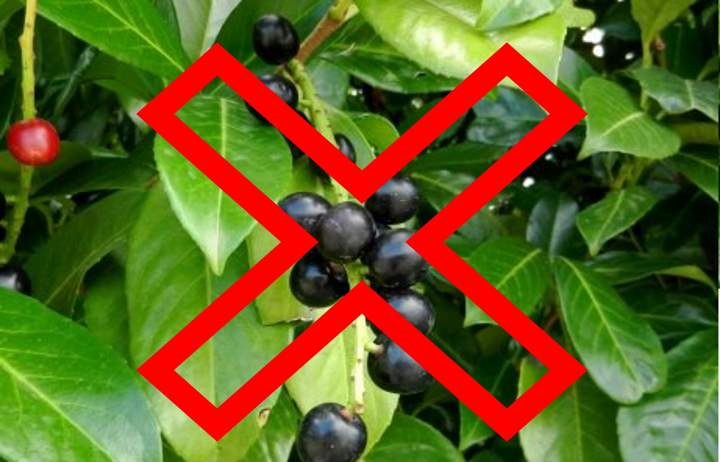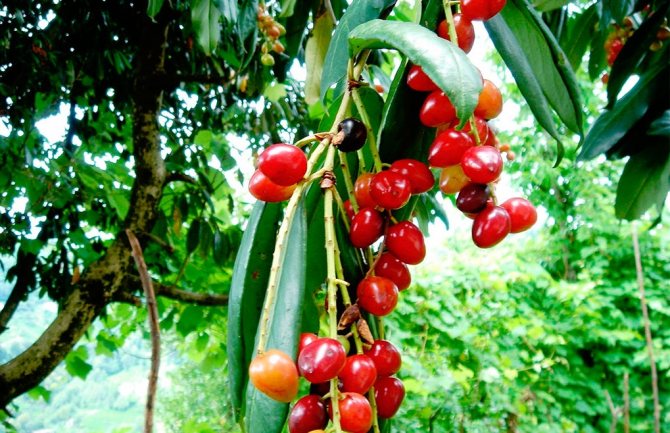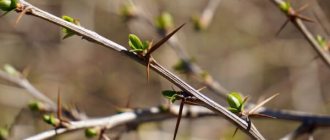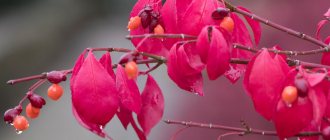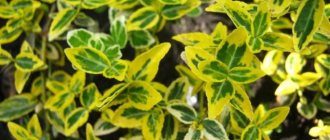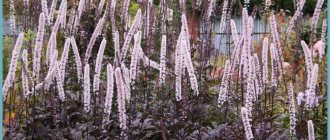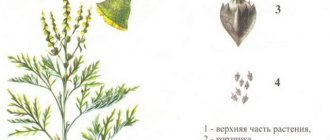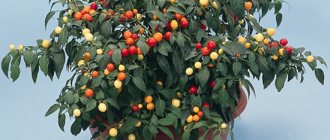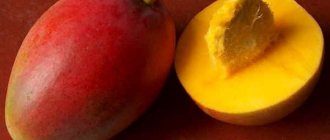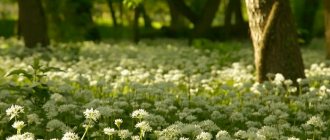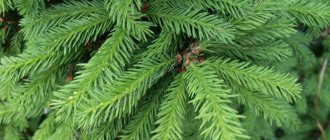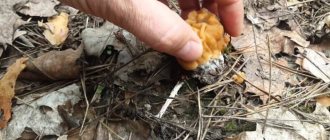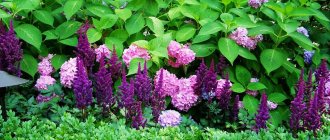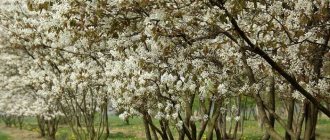This culture is not related to the laurel by kinship, despite the name and external similarity. Lavrovishny - one of the types of cherries known to all, a representative of the genus Pink, which includes peaches, almonds, cherries and apricots. The eloquent name was given to the plant because of the characteristic shape of the leaves.

What is cherry laurel
The botanist Pierre Belon, who discovered the plant, did not become wise with its name. The word "cherry laurel" consists of two: "laurel" and "cherry", and all because the plant has leaves similar to laurel, and its fruits resemble cherry. The Latin name of the plant is "Prunuslaurocerasus". It is an evergreen perennial shrub belonging to the Pink family, the Plum genus.
The name suggests that the shrub is a hybrid of laurel and cherry. This is not true. Before us is a varietal plant - cherry laurel. Photo and description will allow you to study its features in more detail:
- shrub can grow up to 6 meters in height, has a low growth rate;
- the crown of the plant is compact, dense;
- the root system is powerful, well developed;
- the bark on the trunk is dark gray, almost black, rough;
- young branches are green;
- the leaves of the plant are large, leathery, deep green, ovoid;
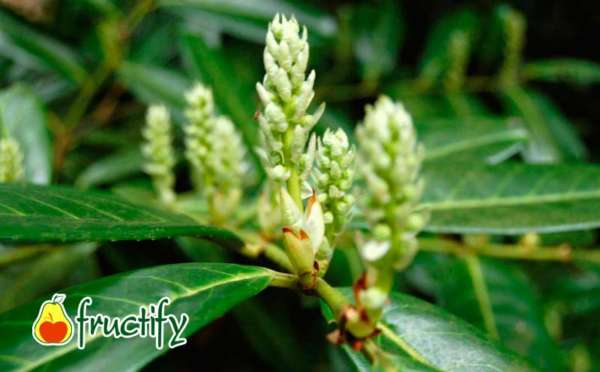

- the top side of the sheet is glossy;
- leaves on the branches are arranged alternately;
- the shrub blooms with white or white-cream inflorescences about 11 cm long;
- flowers appear in April-May, they are fragrant, attract pollinating insects;
- cherry laurel flower consists of 5 petals and is provided with numerous stamens;
- ripening of fruits occurs in July-August;
- the fruit is a drupe, has a rounded shape and a diameter of about 8 mm;
- ripe berries have a dark purple hue;
- under the juicy pulp of the fruit is an oval bone.
Laurel is common in all European countries. It was brought to Europe in the middle of the 16th century from Constantinople. The plant took root well and was in great demand among gardeners, so it began to be actively cultivated everywhere. It grows wild in North America and Eurasia. It can be found in the Crimea, in the Caucasus.
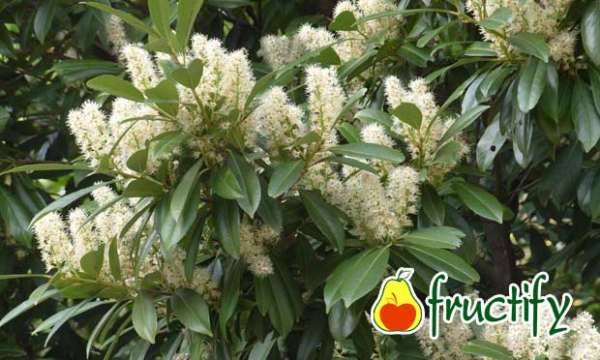

Popular varieties: description and photo
There are about 400 varieties of cherry laurel. Plant varieties differ in the height, size and shape of the leaves, flowering, taste and appearance of the fruit. Among them there are even 3 varieties that can be grown at home. These are medicinal laurel, Portuguese laurel and Lusitania.
Portuguese laurel is a low-growing plant variety with miniature glossy oval leaves with sharp tips. The petioles are colored burgundy. The shrub is slow growing. It bears fruit with juicy black berries.
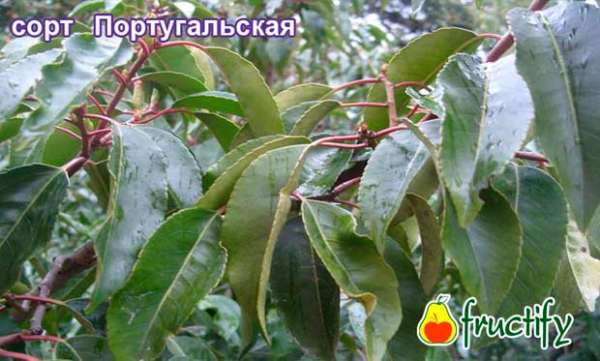

Medicinal laurel is a variety that is unpretentious to growing conditions. He feels good in a room pot, has a fairly rapid growth rate. The leaves of the plant have pronounced medicinal properties, which is reflected in the name of the variety.
Lusitanian cherry laurel is excellent for curly haircuts, so this variety is widely used for decorative purposes. The plant will decorate any room.
In gardens and parks, the following shrub varieties are most often planted:
- Caucasian cherry laurel - leaves are large, shiny, elongated, have a bright green tint, erect branches, blooms with small white flowers;
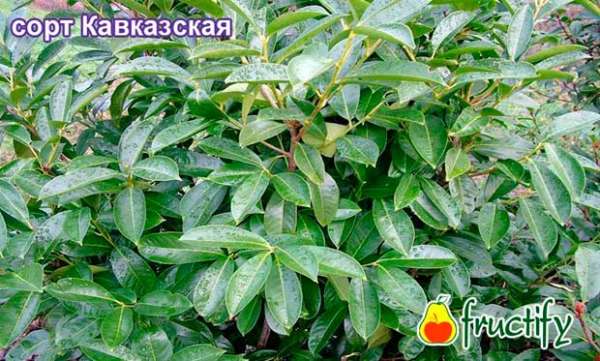

- Shipkensis is a profusely flowering plant variety, distinguished by thin narrow leaves and an erect stem;
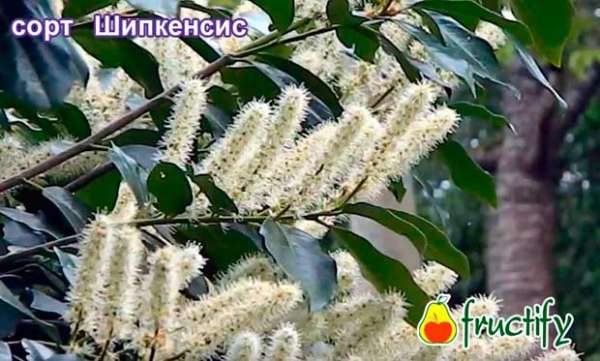

- Otto Luiken - they are distinguished by an elongated leaf shape, the inflorescences look "fluffy" due to the long stamens and small petals of flowers, the variety is miniature, can be used in indoor floriculture;
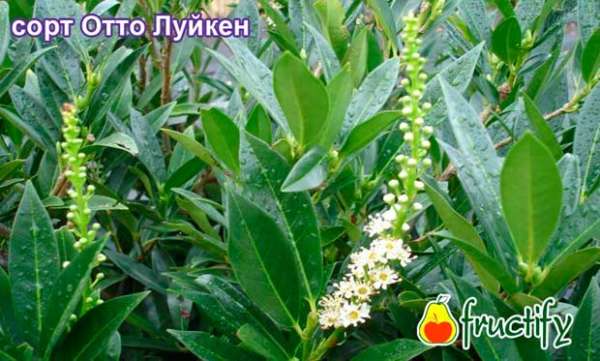

- Rotundifolia - has a strictly vertical arrangement of branches, the color of the leaves is dark green, the plant does not need an abundance of sunlight, can grow on rocky areas, undemanding to watering;
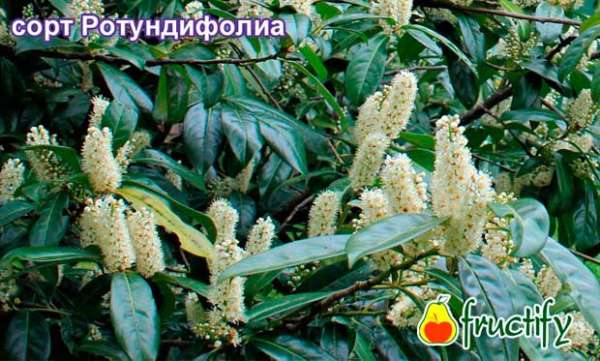

- Herbergeri - the bush grows up to 4 meters in height, the berries have a rich burgundy hue, the variety is characterized by weak frost resistance;
- Mount Vernon is a dwarf variety with long creeping shoots, grows up to half a meter in height, the leaves have a jagged edge, requires shelter in winter, as it is not resistant to cold.
Description of culture
Different types of cherry laurel may look slightly different. The plant belongs to the genus Plum, the subgenus - Cherry and the Rosaceae family. It is grown mainly in warm regions such as East Asia, the Mediterranean, South and Central America.
The tree grows up to 10 meters high. The crown is compact but dense. All parts of the culture, except for the pulp of the berries, are poisonous. The roots are well developed, and the main ones are strongly deepened. Old branches are rough, gray in color, and young ones are green, with a light down. Leaves 8-25 cm long, oval with a sharp tip, growing on short petioles. The color of the foliage is rich green, the front side is leathery, shiny.
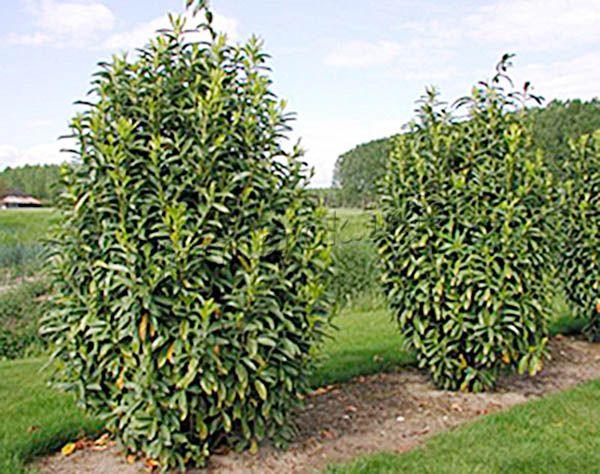

The tree grows up to 10 meters high. The crown is compact but dense
Inflorescences represent an axillary raceme up to 5-13 cm. Flowers are small, white, keep on short stalks, have a pleasant, strong aroma. Flowering occurs in April-May. The berries are ovoid, up to 0.8 cm long, black. The stone is also ovoid. The taste of the berries is sugary, the aroma is not very pronounced. Berries ripen in August.
The use of cherry laurel in landscape design
Since the shrub looks very decorative, all its varieties are popular in landscape design. Laurel is used as a single plant and in group plantings.
It makes an excellent hedge, especially in regions with mild winters, where the shrub does not lose its foliage all year round. With close planting of shrubs, their dense foliage forms solid walls. Pruning cherry laurel allows you to create hedges of varying heights.
The plant lends itself well to shearing, and due to the slow growth of the crown, it retains its given shape for a long time. Evergreen laurel is suitable for creating topiary. For curly haircuts, cherry laurel and Louisiana are most often used.
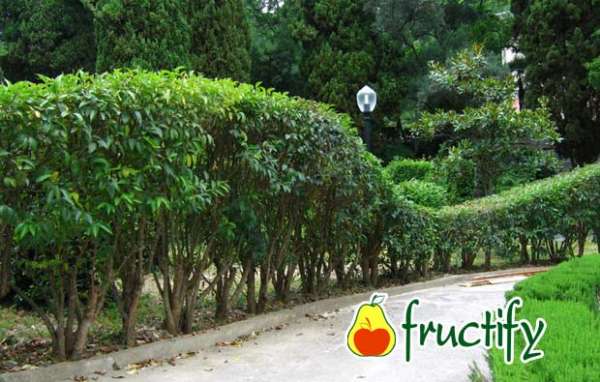

To decorate flower beds and borders, dwarf varieties of cherry laurel are planted. They look beautiful in combination with coniferous shrubs.
Varieties that are poorly resistant to low temperatures are most often used for landscaping verandas, loggias, greenhouses, and in indoor floriculture.
Another touch for an eternal garden.
Until recently, it was believed that an evergreen garden is the lot of the tropics. But this statement is becoming obsolete before our eyes. The evergreen garden is already quite real here. But it can be reliable only with a predominance of conifers in it. Thus, the basis of your evergreen garden should be thujas, junipers, spruces, pines, cypress ... But so that the compositions do not look monotonous, conifers should be "diluted" with deciduous ones. And by the way, not only tree-like, but also herbaceous.
I will list only a part of the possible deciduous accomplices of an evergreen garden. Upper tier: large-leaved and small-leaved rhododendrons, boxwood, cherry laurel.Below: lingonberry, heather, bergenia. And at the very bottom of erica, pachisandra, Gauthier's fescue, periwinkle, thyme.
Cherry laurel tolerates a haircut well. However, in our conditions, the growth energy of the bush is not enough to cut it constantly, as is done in the south. Therefore, it only makes sense to form cherry laurel by shortening the tops of the shoots.
Preparing for winter. Of course, the cherry laurel won't hurt the shelter either. The softest option is to pull it to the ground with something heavy, boards, for example. Better yet, add spruce branches to it.
I myself went the other way. The main danger to cherry laurel is spring sunburn. At the same time, the most dangerous months in this sense are February and March. To minimize the risk of burning, do not plant cherry laurel in constant sunlight. At the same time, she will feel bad in a strong shadow. The southerner still needs warmth from the sun. Based on the foregoing, ideal locations are those where the spring sun is low, the cherry laurel is scarce, and starting in mid-April, it would be in direct sun. Suitable conditions develop, for example, from the north of low buildings or shrub groups.
The Caucasus is under me... Since over the past years my cherry laurel has not shown any desire to "move up", and prefers to grow in a low bush, I have already figured out what kind of company to keep her. The composition will imitate her homeland, the Caucasus. The mountain slope will represent several boulders. I will plant the cherry laurel in the northern part of the plot. And from the south, in front of her, a compact coniferous tree will grow, like the Konik spruce, so that at noon it would obscure the cherry laurel from the sun with its shadow. And the foot of this whole group will be given to the Carpathian ivy.
How to grow cherry laurel on your site
Laurel can be grown both outdoors and in a pot. Outdoor planting and care has a number of features that should be considered by those who want a beautiful and healthy shrub.
Cherry laurel prefers well-moisturized soils. It is more sensitive to watering than to the composition of the soil. It can grow on calcareous, humus-calcareous, loamy and sandy loam soils. Lighting for the shrub is also not so important. Some varieties can easily do without an abundance of sunlight. The plant can grow both in the shade and in a sunny area. Although direct sunlight is undesirable for him.
Those who decide to grow a plant in a room pot should make room for it in the west or east window. In the summer months, it is recommended to put the shrub pot outside or on the balcony. The most active growth is observed at a temperature of 20 - 22 degrees. For indoor cultivation of cherry laurel, you can use a universal soil for potted plants. Be sure to organize good drainage in the pot.
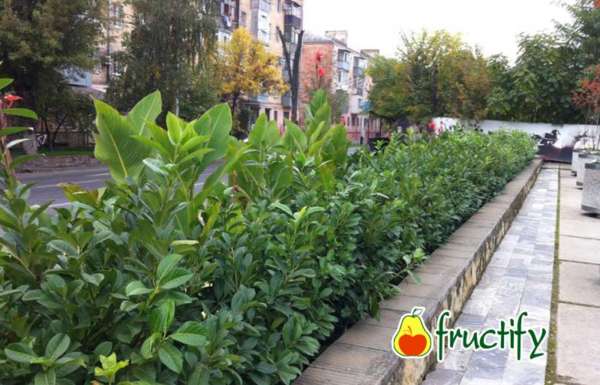

Shrub propagation
There are several ways to propagate cherry laurel:
- cuttings;
- seeds;
- air layering;
- basal processes.
Propagation by cuttings is considered the simplest and most effective method. Woody shoots 10-15 cm long are cut off, almost completely cleaned of leaves, leaving only a few upper leaves. Cuttings are planted in containers filled with soil, deepened by 3 - 3.5 cm. Future plants are kept in a greenhouse. Roots are formed within 2 to 3 months. A year after rooting, the plant can be transplanted into open ground.
Before planting cherry laurel seeds, they should be stratified. To do this, they are kept for about 2 months at low temperatures - at +4 - +6 degrees. After that, the seeds are placed in hot water for a day, periodically changing it.The seeds are deepened into the ground by 1 - 1.5 cm. After planting the seeds, the pots are left in a room for about a year, providing the plants with regular watering.
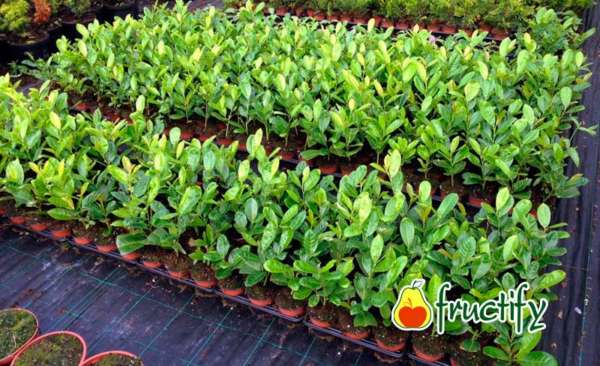

Propagation by air layers allows you to get several new plants. In the spring, it is necessary to choose a healthy young branch, cut it in order to form a root, bend it down and sprinkle it with earth. After 3 - 4 months, the cuttings can be cut off from the mother plant, and after another year, it can be transplanted to a new place.
Propagation by root shoots is used to renew old plants. For this, the shrub is cut off, leaving a low, up to 5 cm in height, stump. In the spring, young shoots will go from him, you can take care of them. By the fall, they will have their own roots, after which the offspring can be transplanted.
Care advice
Caring for a plant can be laborious, it all depends on its variety:
- from the beginning of spring to mid-autumn, the plant needs to be watered regularly, if there is no precipitation, 1 bucket of water should be poured under the bush weekly, and in hot months the frequency of watering is increased to 2 - 3 times a week;
- with a prolonged absence of precipitation in the evenings, foliage is irrigated with water;
- for feeding, a solution of humus or compost is used, fertilizer is applied once a month from spring to autumn;
- in May and October, sanitary pruning of branches is carried out, dry and damaged branches are pruned with pruning shears;
- shaping pruning is carried out at will, the crown looks neat without it;
- so that the roots are well saturated with oxygen, the soil around the bush must be loosened, weeds removed;
- with the onset of cold weather, the soil in the root area is mulched with peat;
- in severe frosts for the winter, it is better to cover the crown with insulating material.
Landing
For cultivation in the open ground of the middle lane, it is necessary to choose the most cold-resistant varieties, for example, medicinal cherry laurel. Plants brought from the south risk dying in the very first frosty winter.
For planting, areas that are protected from the through wind are chosen - near high fences or trees... The soil is preferable nutritious, neutral, slightly alkaline and loose. The works are carried out in April. The holes for the seedlings are prepared wide, with a depth of 70–80 cm. Mineral dressings for flowering plants and high-moor peat are added to the soil. A drainage layer of small stones must be placed at the bottom of the pits. The root collars are left at surface level when planting. Then the plants are watered.
Why is cherry laurel useful?
For many years, laurel has been known as a traditional medicine. Shrub leaves are mainly used. They contain tannins, glycosides, benzaldehyde, phenolcarbolic acids, vitamin C, catechins. These active substances have a strong effect on the human body:
- reduce inflammation;
- help with coughing, having an expectorant effect;
- relieve spasms;
- kill pathogenic microorganisms;
- have a hemostatic effect;
- improve heart function;
- enhance immunity;
- accelerate metabolism.
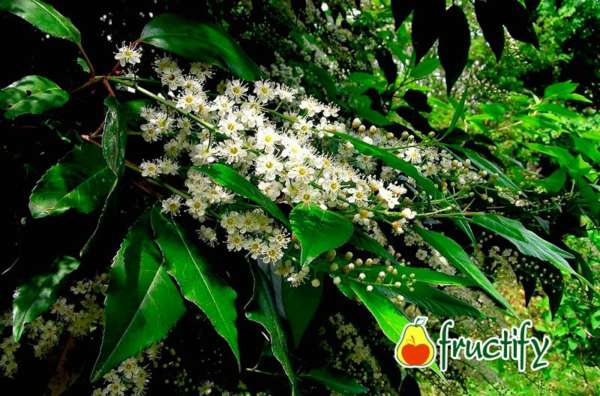

Hydrocyanic acid, which is present in the leaves of the plant, has a dulling effect on nerve receptors, reduces the sensitivity of the receptors of the mucous membrane lining the organs of the gastrointestinal tract, and weakens intestinal peristalsis. These properties are used in the treatment of diseases of the digestive system, neuroses, insomnia.
Note: cherry laurel leaves contain essential oils. This quality allows them to be used as an aromatic additive in the food and pharmaceutical industries. Aromatic pillows are made with dried leaves, sleeping on which relieves headaches.
The use of the plant in traditional medicine
In folk medicine, the leaves and bark of cherry laurel are used to prepare infusions and decoctions. Laurel cherry water is prepared from the leaves of the plant. It is obtained by infusion and distillation of cherry laurel leaves. Folk remedies are effective in treating:
- headache;
- arrhythmias;
- gastritis;
- nervous disorders;
- tuberculosis;
- helminthiasis;
- gynecological diseases;
- cancer.
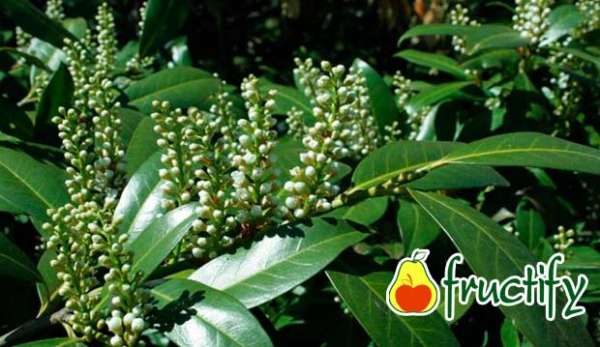

The effect of decoctions and infusions from cherry laurel is due to the presence of hydrocyanic acid in the leaves. When using medicinal drinks inside, it has an anesthetic, anti-inflammatory, antiseptic effect, relieves spasms.
Healing decoctions and laurel cherry water are also used externally for lotions, rubbing, compresses, rinses. They help with dermatological diseases, skin irritation, conjunctivitis.
Important! Due to the content of poisonous substances in cherry laurel leaves, it is unsafe to cook traditional medicine at home and take them without specialist control. It is extremely difficult to calculate the dose, and an overdose can be fatal.
It is known that in the 17th - 19th centuries, the plant was used for heart diseases, similar to Corvalol. But due to the high risk of overdose and the potential danger of hydrocyanic acid, after the appearance of alternative medicines, the use of cherry laurel was abandoned.
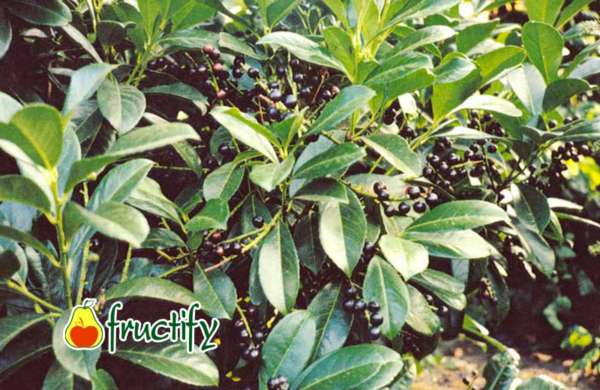

Application
The benefits of cherry laurel are enormous if applied with knowledge and intelligence, but if you overuse the treatment, you can harm your health. It is best to choose one of the recipes and strictly follow the dosage in order to improve your health in just a couple of days.
- An infusion of leaves and fruits of cherry laurel will help with indigestion, disruption of the heart and nervous system. For him, grind a tablespoon of leaves and two berries, and pour half a liter of hot water. After 20-30 minutes of infusion and straining, take 50 ml of the infusion a couple of times a day. With neuroses and depression, you can also take an infusion of quinoa, alternating it with laurel.
- Chopped seeds of berries, mixed in equal parts with sugar, will help the intestines and relieve insomnia. To do this, they are taken in a small spoon three times a day. If you take flax seeds in parallel, you can forget about constipation forever.
- If you already feel discomfort and pain in the stomach, then you can take two tablespoons of the infusion from the leaves. To do this, two tablespoons of dried leaves are brewed in a glass of warm water, left for 20 minutes, and then filtered. It is recommended to drink only for pain.
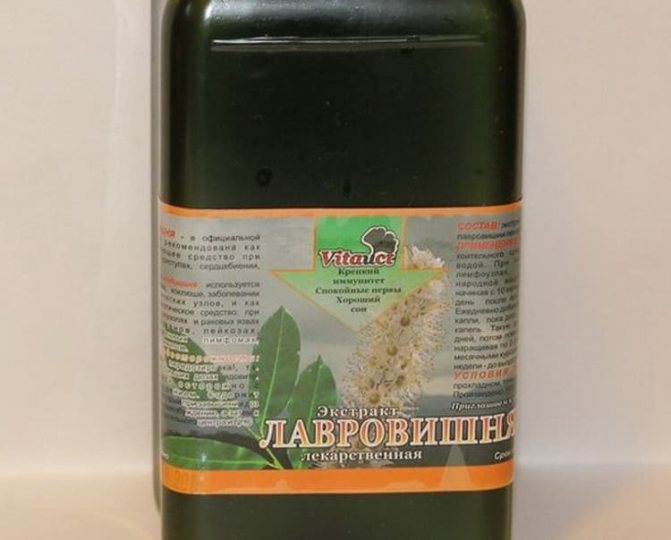

Popular recipes
- The same infusion, but with a higher concentration of leaves, can be rubbed into the scalp to stimulate hair growth, and lotions from the infusion will help with boils.
- A teaspoon of crushed seeds will save you from headaches and migraines. You need to wash them down with raw milk.
- With severe migraines and sleep disturbances, it is worth stitching a collection of cherry laurel leaves, laurel and myrtle into the fabric. You need to lie on it for 2-3 hours to strengthen sleep and 3-4 to get rid of migraines. If the pain persists, you can drink an infusion from the safflower leuzea, which fights well with any kind of pain.
- To strengthen the immune system, it is recommended to eat 100 g of fresh or dried cherries every day.
- For headaches, cherry laurel jam will also help. Eating 4-5 spoons of jam along with the seeds, you can feel relief after 15-20 minutes.
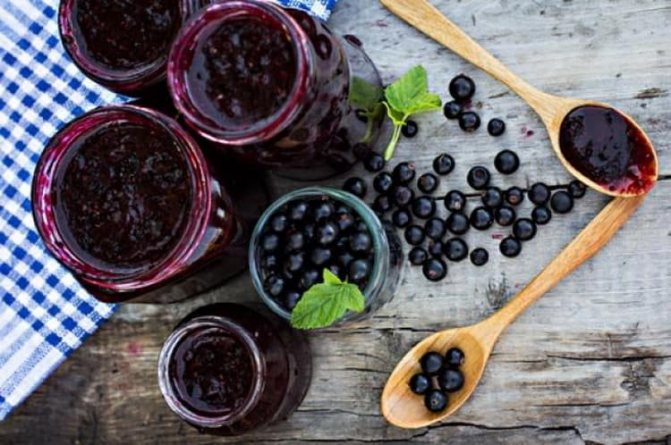

Possible harm and contraindications
All parts of the plant, except berries, are considered poisonous. They contain amygdalin and hydrocyanic acid. This is mentioned not only in scientific, but also in fiction. For example, from the hydrocyanic acid, which is part of cherry laurel, poison was made with which Romeo was poisoned in Shakespeare's tragedy.
Note: Amygdalin in various concentrations contains seeds and leaves of all members of the Pink family.
Amygdalin is a poisonous compound. When it enters the human body, it turns into hydrocyanic acid. In large quantities, it leads to oxygen starvation of tissues.This negatively affects the state of all internal organs and systems:
- due to a lack of oxygen, the work of the nervous system is disrupted;
- the frequency and depth of breathing increases, shortness of breath appears, with severe intoxication, breathing is inhibited until it stops completely;
- heart rate slows down, blood pressure rises, acute heart failure develops, cardiac arrest is possible;
- under-oxidized products, lactic acid, acetone bodies accumulate in the blood;
- metabolism is disturbed.
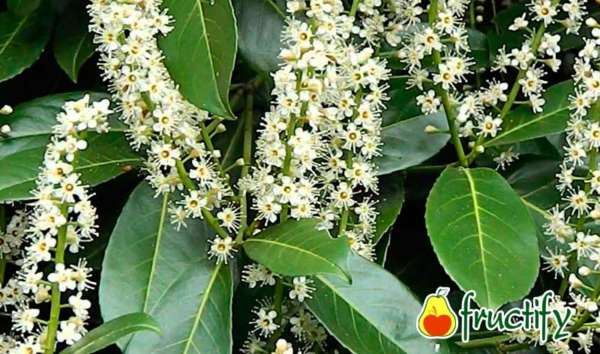

Contraindications to the use of cherry laurel fruits and medicines based on the plant:
- pregnancy;
- lactation period;
- childhood;
- individual intolerance;
- allergy;
- the presence of chronic diseases in the acute stage.
The benefits and harms of cherry laurel in each case will be different. If there are contraindications, it is prohibited to use it. It is better to consult a doctor before use.
What is the difference between cherry laurel and laurel
The cherry laurel got its name because of the similarity of leaves with laurel. This similarity is so clear that not everyone will be able to immediately tell which plant is in front of him. The fact that the leaves of plants are similar is used by unscrupulous traders of seedlings, passing off cherry laurel for a bay leaf. There are differences between shrubs, and there are a lot of them. By the way, distinguishing bay leaves from cherry laurel is important not only for those who decide to grow a shrub in their garden.
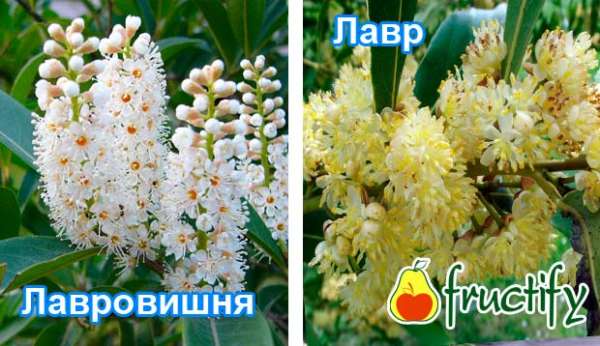

The poisonous substances contained in the leaves of cherry laurel do not allow them to be used in cooking, like laurel. Wanting to grow laurel on your site and planting cherry laurel instead, you can face the unpleasant consequences of eating a poisonous plant.
So, how to distinguish cherry laurel from laurel. Both laurel and cherry laurel have ovoid, elongated leaves. Their size may vary, depending on the variety and age of the shrub. But laurel leaves have the same color on both sides, while cherry laurel has a shiny “front” part. When dried, bay leaves are tougher and more dense.
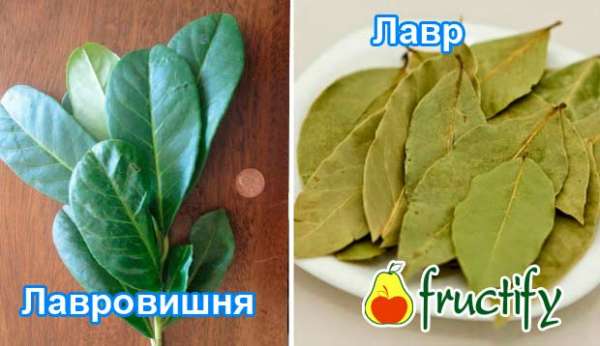

Another important difference between cherry laurel and bay leaves is the smell. Laurel is very fragrant, which is why it is used as a spice in cooking. The cherry laurel has a subtle smell.
Another tip on how to distinguish a bay leaf from the hero of our article: take a closer look at the branches of bushes. Comparing them, you can see that the laurel bark is green, in places reddish, the leaf petioles are dark green. The cherry laurel has a brown bark, the leaf petioles are reddish.
You can still distinguish laurel from cherry laurel by its fruits. If you have a fruiting plant in front of you, the fruit will be one of the key differences. Laurel has blue-black fruits, small, solitary, they are unsuitable for food. Cherry laurel is sweet, sometimes with bitterness, the fruits are fleshy, juicy, arranged in clusters, have a purple-black or burgundy hue.
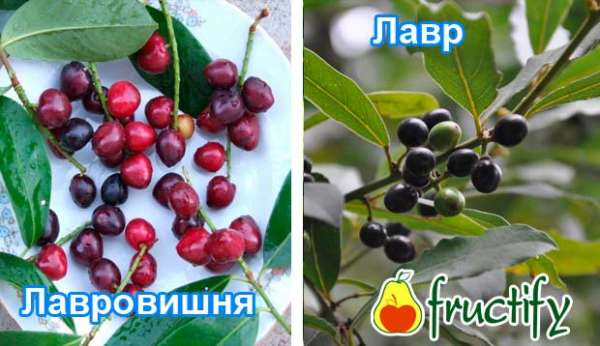

Agrotechnical requirements
The landscape tree is intended for growing in the garden, in the country, on the balcony or in a special container. Planting of seedlings occurs in early spring or autumn, when the soil is still wet and dense. Laurel is an undemanding crop, but each variety has certain individual characteristics.
Consider the grafting of a perennial:
- For breeding laurel cherries, take last year's or apical cuttings. The length of each varies from 10 to 15 cm.
- Planting seedlings are cut in the second half of August or even early September.
- After cutting the cuttings, they should be placed in a mixture of peat and sand. Alternatively, humus can be used instead of peat.
- When planting, drainage is required; ordinary expanded clay is used to create it.
- After the cuttings have a strong root system, they are transferred to medium-sized pots. In pots, they will develop throughout the year.
- After this time, they are transplanted to a permanent place in open soil. If the root system develops quickly, then the transplant should be carried out faster.
Important! The most common disease affecting the plant is grape powdery mildew. To cure the disease is quite simple, for this you will need to use special preparations based on sulfur or other fungicides.

